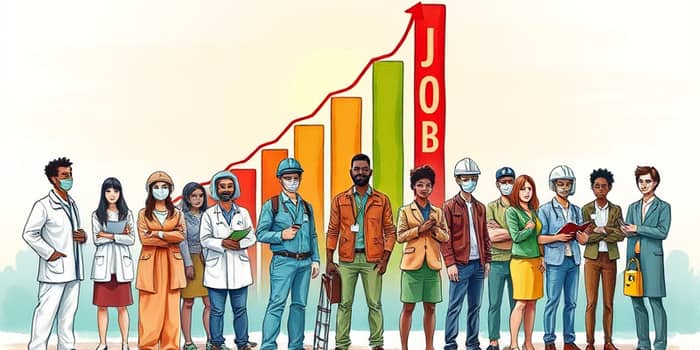
Global labor markets have shown surprising resilience, with major economies reporting stronger-than-expected employment gains through mid-2025. Despite mounting concerns about slowing growth, inflationary pressures, and geopolitical risks, headline job numbers continue to impress analysts and policymakers alike.
Recent data reveal that the world unemployment rate remains “relatively stable and low” at around 5%, underscoring a steady recovery in the labor market even as economies navigate uncertainty.
According to the World Economic Forum, the period from 2025 to 2030 is expected to generate net job growth equivalent to 7% of today’s total jobs—approximately 78 million net new positions. This figure reflects 170 million new roles created and 92 million displaced, resulting in a robust expansion of global employment opportunities.
The International Labour Organization has slightly downgraded its 2025 outlook—projecting 53 million jobs added instead of 60 million previously estimated—but still anticipates a 1.5% growth rate, only marginally below earlier forecasts.
While global GDP growth is now forecast at 2.8% for 2025, down from 3.2%, job creation has remained surprisingly resilient in major economies, outpacing many analysts’ expectations.
In the United States, May 2025 brought 139,000 new jobs, led by the healthcare and social assistance sector, which added 62,200 roles. Leisure and hospitality followed with 48,000, while social assistance contributed another 16,100 positions.
Beyond these headline sectors, emerging areas are driving the rapid expansion of tech and green employment. High-growth roles include Big Data Specialists, AI & Machine Learning Engineers, and Renewable Energy Technicians, reflecting an increasing focus on sustainability and digital expertise.
High-income countries have experienced slight increases in labor force participation, driven by trends in older workers and women's employment. In contrast, low-income nations grapple with rising youth unemployment and widening gender gaps.
Approximately 84 million jobs across 71 countries are tied to U.S. consumer demand, with 56 million of those in the Asia-Pacific region. Canada and Mexico are particularly exposed, with 17.1% of their jobs depending on U.S. consumption.
Heightened geopolitical tensions and trade disputes pose a risk to these positions, underscoring the need for diversification and resilience in supply chains.
Despite strong headline numbers, hidden vulnerabilities threaten future momentum. A global “jobs gap”—comprising unemployed individuals and those wanting work but not actively seeking it—stands at 402.4 million, revealing persistent underemployment.
These risks highlight persistent structural bottlenecks in labor markets, from skills mismatches to demographic shifts that require strategic interventions.
To maintain and enhance job creation, stakeholders must prioritize targeted investments in skills training and education. Governments can support apprenticeships and reskilling programs, while businesses should embrace skills-based hiring practices to match talent with evolving needs.
Policymakers should also foster innovation through incentives for green technology and digital infrastructure, ensuring that the transition to a low-carbon economy generates high-quality jobs.
Employers can further strengthen labor markets by offering flexible work models, enhancing remote and hybrid arrangements that boost retention and attract a diverse workforce.
As we approach 2030, resilience and adaptability will determine the trajectory of global employment. The interplay between technology, sustainability, and evolving worker preferences is reshaping how and where people work.
By focusing on upskilling, embracing innovation, and addressing structural inequalities, major economies can sustain the momentum of job growth and ensure opportunities are accessible to all.
Ultimately, the remarkable performance of labor markets in mid-2025 offers a foundation for optimism—but turning potential into reality will require coordinated action from governments, businesses, and workers worldwide.
References













